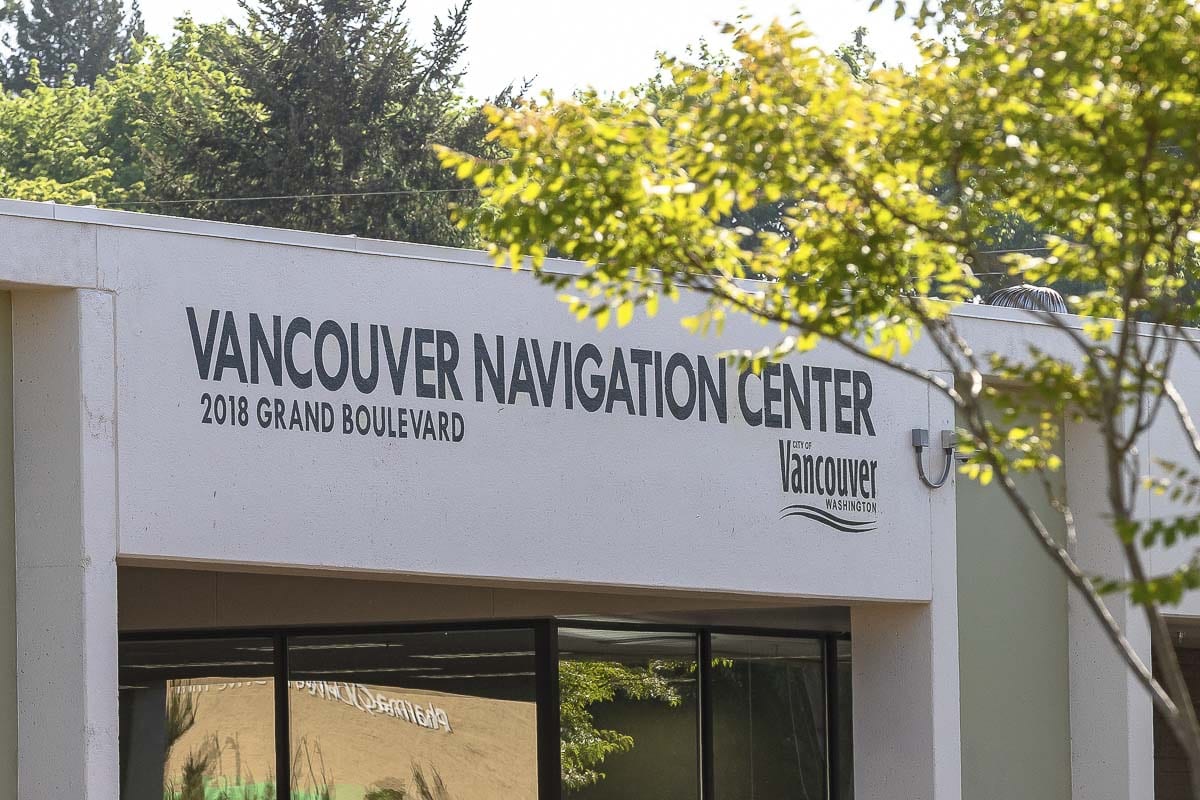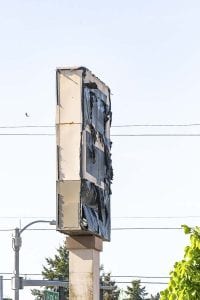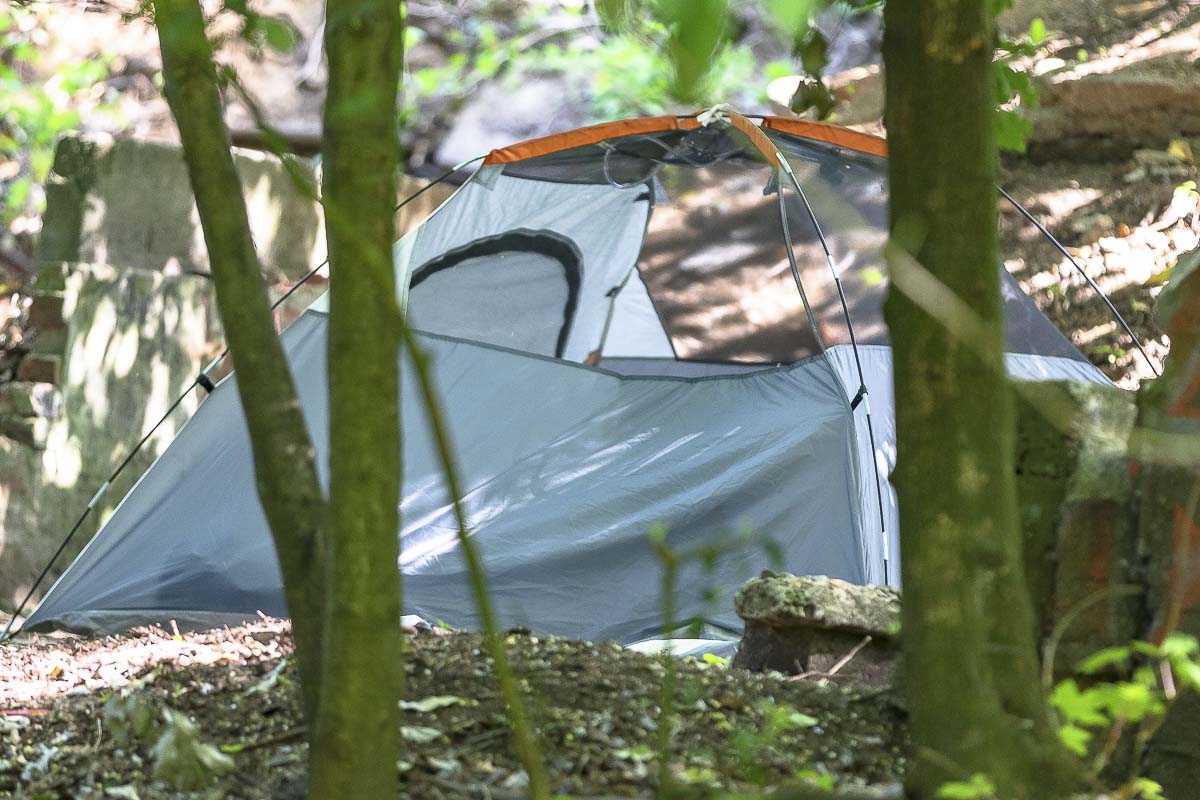Residents near Fourth Plain and Grand Boulevard say a recently opened Homeless Navigation Center is causing major problems in the neighborhood. ClarkCountyToday.com’s Chris Brown reports.
Neighbors demand city shut down the center and reexamine how it is being operated
Editor’s note: ClarkCountyToday.com is continuing to explore issues with homelessness in the area. We will advance this conversation with more reports in the near future.
VANCOUVER — On a sunny Wednesday afternoon in central Vancouver, a group of transients stand on a sidewalk along Grand Boulevard, outside the Homeless Navigation Center. Suddenly shouts erupt; angry words and threats exchanged in a staccato tone. It’s unclear what sparked the dispute, but one man can clearly be heard from across the street promising to wait for his opponent nearby to “beat him to a pulp.”

It’s a scene that neighbors say has become all too familiar in the five months since the city opened the Navigation Center inside the former Fish and Wildlife building at 2018 Grand Boulevard, just south of Fourth Plain.
“If you truly care about the homeless you don’t put them here, in the most drug-infested neighborhood that is in recovery,” says Laura Lindeman, one of a group of neighbors leading a fight with the city over the Navigation Center and the influx of homeless it has brought to an area of town known for its history of drug activity and gangs.
“It’s really sad to me because it did improve a lot,” says Kim Torrence, who moved back into the neighborhood two-and-a-half years ago. “I grew up here and I have seen this neighborhood change and it was looking up.”
Torrence lives a couple blocks from the neighborhood Wal-Mart that replaced the vacant Fred Meyer building at Fourth and Grand a few years ago. When she first moved back, she says she didn’t mind letting her then-10-year-old daughter and some friends walk to the store on their own. Now, Torrence says she won’t even go to the store herself after dark.
“They walk around crazy, all the time, just ranting and raving in the store and in the parking lot,” she says. Pointing across the street at the Navigation Center she adds, “they close their gates after dark. We don’t have gates to close, so where do you think all these people go? They go into our yards, our garages, our cars, and it’s just scary.”
In documents posted online, Commander Dave King with the Vancouver Police Department issued his findings that the Navigation Center was unlikely to lead to a spike in crime. But police reports Lindeman has posted to a closed Facebook group populated with fed-up neighbors show that there has been an increase of reported crimes and calls to police, much of it tied to the center and its population of transients that flow in and out of the area each day.
James Dougherty, another member of that social media group, says established business owners in the area have told him they’re ready to close up shop and move somewhere else.
“Some businesses have seen an increase of 300 percent in shoplifting,” says Dougherty, “others have seen a drop of over 80 percent of their business.”
The Navigation Center at Fourth Plain and Grand emerged from a search by the city for a permanent day center to replace a temporary shelter at the Friends of the Carpenter Warehouse on West 20th Street downtown. It was opened in 2015, but the city maintains that the space and location made it a bad fit for a permanent shelter. A fact sheet from the city says 20 locations were considered before the 2018 Grand building was settled on. The city purchased the property in January of last year and began renovations to turn part of the building into a day center.

The current day center uses approximately 5,000 square feet of the 25,000-square-foot building, providing space for showers, restrooms, secure storage, phone charging stations, and laundry facilities.
Vancouver Mayor Anne McEnerny-Ogle says there are ongoing discussions over what to do with the remaining vacant space in the building. The hope was to bring in other services to provide drug treatment and mental health counseling to the space.
“We want to have that conversation with the neighbors,” says the mayor. “What asset would be helpful for you? Is it a health clinic, is it a health center? Not just for the homeless, but maybe it’s something that all of the neighbors could use. Is it a shelter for women and children? We need to have those conversations. We said we would have those conversations in the Fall, so we’re trying to solve our problems. It’s been open for five months, what are some of the issues, and how do we solve that before we go to the next step?”
The neighbors say they have made very clear to the city what the problems are at monthly neighborhood meetings inside the center.
“There’s nobody in there navigating, the offices are empty, there’s nobody in there housing anybody,” says Lindeman. “There’s nobody in there from an addiction counseling center … nobody trying to get anybody jobs in there.”
“The city’s response to this has been to dismiss it, to downplay it, and to act like everything is normal,” says Dougherty, “if not better than it was before the day center was located here.”
“We absolutely appreciate their concerns and are working on it,” promises McEnerny-Ogle. “People camping? Yes. But we’ve had people camping there before too. But individuals have noticed an increase and so we want to make sure that our police and our outreach individuals, and our Talkin’ Trash individuals and our security are working with each one of them, because I want the neighbors around to feel secure.”
The city does employ a group of homeless individuals for a program called “Talkin’ Trash,” which sends them out around the Navigation Center to pick up garbage. The neighbors say they appreciate the effort there, and the increased attention by Vancouver Police, but that doesn’t solve the problems happening on private property.
“We have found human feces, needles and, when they close at 5 p.m. these folks disperse into our neighborhood and there are no facilities for them to use,” says Steve Lindeman. He and Laura own several rental properties in the area and say they’ve had a much more difficult time keeping tenants around since the Navigation Center opened.
A shell game?
For most of our interview, the neighbors tip-toe around what seems to be their biggest issue with the city. Finally, Steve Lindeman comes out to say directly that he believes the Navigation Center represents an effort on the city’s part to shift the homeless population away from the new Vancouver Waterfront, the focus of a multi-million dollar tourism campaign being launched by Visit Vancouver.
“There are no more homeless down in that region because of the aggressive sweep by the police,” Lindeman says. “They’ve all been herded up here into this densely populated residential neighborhood. The timing of that is real interesting.”

While the city hasn’t denied that police were instructed to keep transients away from the new waterfront as much as possible, they argue the Navigation Center is, in fact, a step towards a newer model of providing a one-stop location for homeless services.
“Whatever we can do to make that a success, not just for those that are homeless but for the entire neighborhood, we’re willing to do,” says McEnerny-Ogle. “Is it additional security? Yes. We brought in additional security so that they’re outside working with individuals who are outside, maybe on the sidewalk. Working with Wal-Mart on the other side of the street.”
But Lindeman alleges the city has ignored advice from members of its own police department. She says one crime analyst with VPD called the Navigation Center an “open air drug market.”
“(Drug dealers) have a captive clientele right here,” she says. “Up to 120 people a day coming into this center.”
Dougherty says they have plenty of documentation of drug deals happening outside the center, either right on the sidewalk or in the Wal-Mart parking lot where RVs and vehicles with busted out windows are a common sight. He and other residents worry that the easy access to people struggling with addiction will bring drug dealers streaming back to a neighborhood still fighting to change its identity.
“To bring in a population who is vulnerable and prone to those types of activities is … beyond comprehension that you would do that to a neighborhood like this,” says Dougherty.
Best practices, according to the city’s own analysis, would include peer mentors, in-house substance abuse counselors, and non-uniformed security personnel.
“This current center has no mentorship program, security staff is in uniform contracted through the city,” says Dougherty, “and the atmosphere at this center is such that when a volunteer came in to volunteer there, who’s been sober for a number of years, she did not feel safe in the environment of that Navigation Center, as someone that had recovered from addiction.”
The group is actively distributing a petition, demanding the city shut down the Navigation Center, at least until a third party can be brought in to evaluate how it’s being operated and the city implements changes, including eliminating a covered area outside the entrance of the building, and limiting access to the facilities.
Police records show a number of calls in or near the center for assault, drug dealing, theft, and more. Steve Lindeman says there has been at least one stabbing inside. Others say they’ve been inside while the center is open and describe the scene as “chaos.”
“Forty assaults in the first 30 days it was open? I won’t walk foot in there unless it’s closed,” says Rachel Weber, another member of the group.
“I think that they are falling short of saving lives here,” says Laura Lindeman, “and they’ve put more people in danger; the community and the people that they are supposed to be helping.”
Mayor McEnerny-Ogle says the city remains open to hearing the concerns of the community, and will continue to evaluate necessary changes to address the problems.
“If they want to walk their neighborhood and go to any of the businesses around there, they should be able to do that day or night,” says the mayor.
But neighbors say things are well past that point now, and they’re worried nothing will happen until something tragic occurs.
“It’s getting volatile between very aggressive participants at the day center and truly fed up parents of kids and neighbors that are living around here, and the business owners that are having to clean it all up,” says Lindeman. “It is, in my opinion, about to blow up.”
Vancouver Mayor Anne McEnery-Ogle talks with ClarkCountyToday.com reporter Chris Brown about issues of homelessness in the city.




